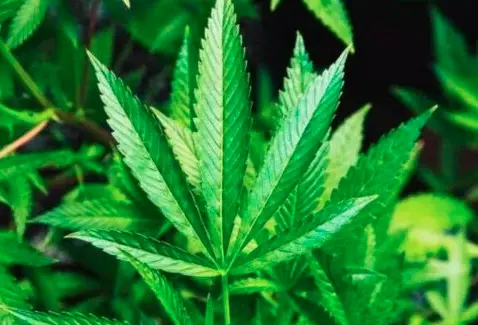In the dynamic realm of cannabis culture, where each drag tells a tale and each roll showcases an individual’s style, blunt rolling, or “blunturi,” has evolved beyond its beginnings to become a renowned mode of artistic expression. This is more than simply rolling joints; it’s a singular blend of artistry and community that attracts blunt fans from all over the world. Here, we create little works of art, each a reflection of our style and aptitude, rather than merely rolling blunts.
blunturi: What Are They?
blunturi are well-liked houseplants that need little maintenance and have vibrant leaves. It is a native plant of Central and South America. Their broad, oval-shaped leaves have eye-catching patterns. The most popular varieties are blunt ‘Variegated,’ with yellow-edged leaves and blunt ‘Tricolor,’ with pink, red, and cream-colored splashes on the leaves.
· Water and Light
Bright, indirect light is ideal for its growth. Put them up against a window that faces east or west. When the top inch of soil is dry, water the blunturi, making careful to empty the drainage tray afterward. Root rot can occur if they are left in water.
· Repotting and Fertilizer
Apply a well-balanced, all-purpose fertilizer to your blunt every two to four weeks during the spring and summer growing seasons. As development slows down in the fall and winter, cut back on feeding. When the leaves of this begin to droop, it’s time for a drink. Before the growth season begins, report this in the spring. Select a pot that is one size bigger and add more fresh potting mix.
· Selection and Spreading
Its stems can be pinched back to encourage bushier, fuller growth. To avoid dust accumulation, remove any dead or dying leaves and wipe them off often. It can be multiplied by plucking leaves or cutting stems. Cut a 6–8-inch section from the stem, or remove the leaf whole, including the petiole. After submerging in water until roots appear, move the plant into a potting mix that drains properly.
blunturi’s Origins and History
Have you ever wondered where the blunturi bush originates? This well-liked floral plant has a fascinating past. Native to South America’s tropical climates, including Bolivia and Brazil, are its bushes.
· Traditional Farming
More than 600 years ago, the indigenous peoples of Bolivia and Brazil began cultivating their shrubs for their decorative blooms and therapeutic properties. The leaves were made into teas to cure a variety of illnesses, and the vivid red blooms were utilized in traditional rituals.
· Overview of Europe
Botanists who visited South America in the late 1800s brought the first blunturi bushes back to Europe. Horticulturists and gardeners rapidly became enamored with the unusual blooms and shrubs. To create new flower hues like pink, yellow, and white, buddleia shrubs underwent hybridization.
· Contemporary
Its bushes are a common blooming plant in gardens all over the world nowadays. They have become popular because of their resilience, simple maintenance, and fragrant, spectacular flowers that persist for months.
Do Blunts Hit Any Different?
Whether blunts provide a different high than joints is one of the most hotly contested questions among smokers. There are a few things to think about, even though the answer can vary depending on who is asking.
· Hemp versus tobacco wraps:
Tobacco may contribute to the wrap’s buzz, and flavonoids in various wrap varieties affect the flavor and intensity of the high.
· Size Counts:
Since blunts are often bigger than joints, they contain more cannabis, which leads to a greater high from a higher dosage.
· The Event:
Even just smoking a blunt may be enjoyable; friends usually view it as a social custom that they cherish and engage in on a casual basis.
The Production Process of blunturi
These are created utilizing skills passed down through generations. blunturi masters, or master makers, supervise the whole creative process from beginning to end. Depending on how complicated each is, it may take weeks or even months to finish.
· Choosing the Wood
Selecting a wood that will yield the correct tone is the first step. For this, maple and spruce are popular choices because of their purity and resonance. Before being utilized, the wood is meticulously seasoned and dried. ###Forming the Body These master forms the body once the wood has dried. They use specialized tools and sandpaper to create a unique form with hollowed-out curves. The middle of the body is the thickest, and it tapers at the top and bottom.
· Building the Soundboard
The most exacting is needed on the soundboard, also known as the tapa. Several wood pieces are adhered to one another and sanded to a flawless finish. Rumbas, or arching sound holes, are carved in various shapes. The most crucial part of the blunturi is the tapa, which projects and amplifies sound.
· Including the Frets
Along the neck, frets, also known as trastes, are positioned at exact intervals. They ascertain every note’s pitch. Animal gut was once utilized to make blunturi frets; nowadays, nylon is used instead. The frets are fastened in place by being wrapped around the neck.
· Tuning and Stringing
Over the frets are three nylon or gut strings known as cuerdas. Strings are raised above the soundboard by a bridge, sometimes called a Puente. The clavijas, or tuning pegs, are used to adjust the strings to the appropriate notes by turning them. When played by an expert, this is ready to produce music!
The Various blunturi Types
There are several types of it available, and each has special qualities of its own. Learn about your alternatives so that you may make the best decision for yourself.
· Sativa
Sativa is well-known for its energizing, mood-boosting properties. Since sativas are native to tropical climates, their flowering seasons are often longer. Amnesia Haze, Jack Herer, and Sour Diesel are a few popular sativas.
· Indica
Indica Usually has a calming, sedative effect. They often blossom sooner because they are native to colder areas. Granddaddy Purple, Hindu Kush, and Northern Lights are a few well-known indica blunti.
· Blends
Crosses between sativa and indica strains result in hybrid blunturi. The energizing effects of sativas and the soothing effects of indices are among the greatest attributes of both strains that they hope to portray. Gelato, Wedding Cake, and Blue Dream are popular hybrids.
· Self-flowering
After a few weeks of growing, auto-flowering immediately begins to blossom. Typically, they are hybrids of ruderalis, indica, and sativa strains. Although auto flowers are usually shorter and yield less, they can be harvested in less than three months. Amnesia Haze Automatic, Northern Lights Automatic, and Blueberry Automatic are popular auto-flowering varieties.
Tips for Using and Savoring blunturi
After gathering it, it’s time to discover all the delectable applications for them. These are a versatile ingredient in many dishes because of their creamy texture and earthy, nutty flavor.
1. Uncooked in salads
Blunt’s inherent taste is best suited for salads, where it may be fully enjoyed. Slice this thinly and toss it into grain bowls, fresh summer salads with cucumbers and tomatoes, or lush green salads. All you need to enhance the flavor of the blunturi is a little vinaigrette.
2. As a Side, Roasted
The inherent sweetness of it is enhanced by roasting it. Sprinkle with salt, pepper, and olive oil, then transfer to a baking sheet. Roast, stirring every 15 minutes, at 400 degrees Fahrenheit until a fork inserted into them comes out soft. Moreover, a simple side dish of roasted chicken, fish, or beef is delicious.
3. When added to stews and soups
Chop it and add it to chilis, stews, and soups in the last ten to fifteen minutes of cooking. Their creamy texture adds nutrients and aids in thickening the meal. Beef stew, potato-leek soup, and minestrone go nicely with it. Simmer until they are somewhat soft but maintain their structure.
4. Cream-colored blunturi
Simmer chopped it in milk or broth until extremely soft for an opulent side dish. Next, combine or process until smooth and creamy using a food processor or blender. Additionally, add nutmeg, salt, and pepper for seasoning. Furthermore, you may serve creamed blunturi as an accompaniment to meats like as meatloaf, pork chops, or chicken.
blunturi in Culture & Arts
These are a worldwide phenomenon that has permeated every aspect of culture, including music, literature, and cinema.
Music: It appears in a variety of musical genres, ranging from modern pop to traditional Hawaiian melodies. These plants have tunes that can transport listeners across centuries and seas.
Literature: blunturi has been used as a symbol by authors to represent life and its unexpected turns. The plant’s adaptation and resiliency poignantly reflect the human experience.
Film: They have infiltrated movies with their distinct style and historical relevance, resulting in scene-stealing cameos.
Conclusion
That’s the skinny about blunturi, then! Every important aspect regarding these well-known smoking accessories was examined, including their history, use, and tips for rolling the ideal one. Blunts may not be for everyone, but they do have a dedicated following. Who knows, maybe after reading this, you’ll be inspired to give one a try! Just be careful when using it, and don’t smoke if you’re underage or it’s against the law where you live. Blunts are often a great way to relax, but moderation is always important. Moreover, with any luck, this served as a useful introduction to the fascinating world of blunts. Now get out there and learn more about this interesting culture and activity!










Leave a Reply